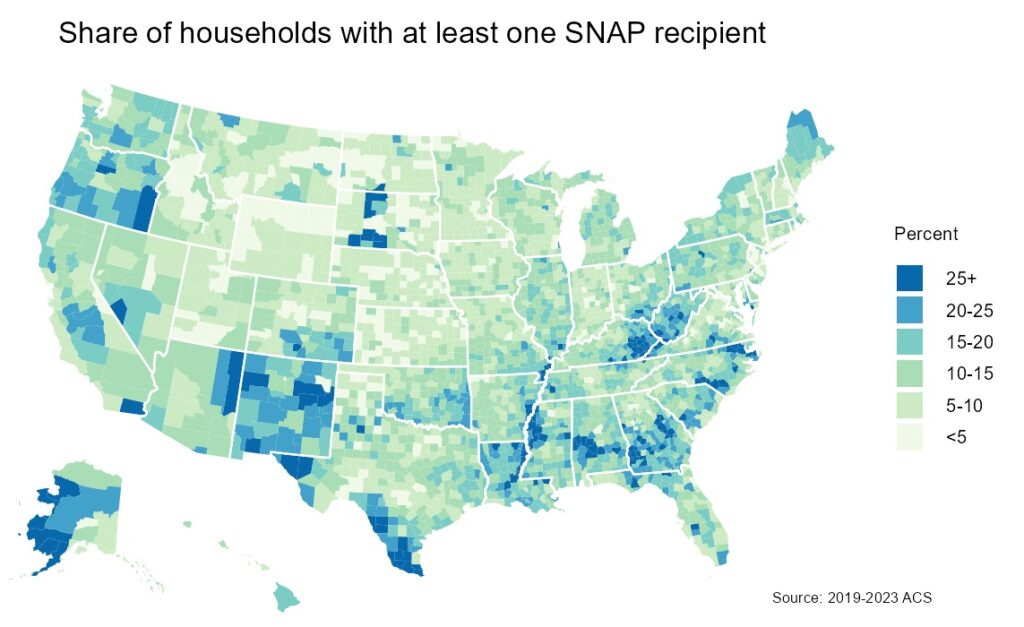Despite all the madness of the past week, I want to turn my attention back to the Republicans’ so-called Big Beautiful Bill, which continues to move through Congress. The legislation will do many things, most of which involve taking money from poor people and giving money to rich people. The New York Times said it would be “more regressive than any major law in decades.”
The parts of the bill that will most hurt poorer people are the Medicaid cuts and SNAP cuts, the latter of which I want to talk about today. Specifically, I want to talk about SNAP work requirements, although there are other SNAP cuts in the bill too. Currently, unless they work at least 20 hours a week, most adults ages 18 to 54 who are not disabled and do not have children can only get SNAP for three months in a three-year period. The bill would greatly expand the number of people subject to these work requirements, by extending the age range to 64 and limiting the exemption for parents to only parents of children under 7.
Here’s the thing about SNAP work requirements though, and you’re going to want to be sitting down for this: they don’t work. Research has demonstrated that work requirements force people off SNAP but do not increase employment. Some studies have even found evidence that work requirements reduce earnings.
So, the new requirements will throw people off SNAP and into further financial uncertainty and hardship. An Urban Institute analysis found that these restrictions would cause nearly 2 million people to lose all of their SNAP benefits, and another 3.6 million people to lose some of their benefits.
Those trying to cut SNAP like to talk about people who receive SNAP as if they are different than you or me. Everyone knows Ronald Reagan’s attack on “welfare queens.” More recently, disgraced former Congressman Matt Gaetz called SNAP recipients “coach potatoes.” But SNAP recipients are Americans just like the rest of us. Over 40 million people received SNAP in 2024. Just for context, that’s more people than were on traditional Medicare last year. It’s also four times as many people who watched any single NBA Finals game last year. Moreover, the SNAP rolls are not static over time, so many millions of people will get SNAP at some point in their life. In fact, a 2005 study showed that around half of adults will live in a household where at least one person receives SNAP at some point in their life (which is not precisely the same thing as receiving SNAP yourself, but the point remains).
To illustrate the point further, I put together this map showing the share of households in each county where at least one person reported receiving SNAP. Note that these numbers will be underestimates, because people tend to underreport benefits.

It is very rare for a county to have fewer than 5% of its population living in households that get SNAP. In fact, this is only the case in 274 of the 3,142 counties in the data. By contrast, there are 374 counties with at least 20% of the population living in SNAP households. Moreover, these counties are all over the country: north, south, rural, urban, red states and blue states. Cuts to this program would devastate people across the county: our neighbors, our friends, and our families. These cuts will not help people get jobs; they will take away a vital source of nutrition and stability.
1 Comment
Medicaid Cuts are Coming to a Neighborhood Near You - kevinonthemargin.com · July 9, 2025 at 10:46 am
[…] of July, President Trump signed the Republican reconciliation bill into law. A couple weeks ago, I wrote about the devastating impacts that this bill would have on SNAP. Other publications have extensively […]